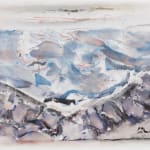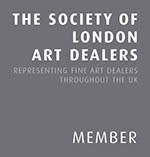
 Framed image
Framed image
 Verso
Verso
John Marin American, 1870-1953
16 x 21 in
Further images
Provenance
The Downtown Gallery, New York.Acquired from the above in 1952 by previous owner;
Acquired from the above by JC Gallery;
Exhibitions
Ithaca, Herbert F. Johnson Museum of Art, The David M. Solinger Collection: Masterworks of Twentieth Century Art, 2002-03, p. 110, illustrated.London, JC Gallery, James Ward presents: American Modernism, 2023
London, JC Gallery, James Ward Presents: Seven Americans, 2024
Literature
Sheldon Reich, John Marin: Catalogue Raisonné, vol. II, Tucson, 1970, no. 39.5, p. 696, illustrated.Paintings of this period for Marin were incredibly robust, considering he was a man in his sixties. The excitement and vigour in these works show how invested Marin was in his subjects and how vital painting was to his character.
Marin mentioned in a letter to Stieglitz that working between watercolour and oils helped him get closer to and understand his subjects better. A dialogue between the immediacy of watercolour and the slower pace of oils allowed Marin to take in his landscapes with a more dialectical human approach.



